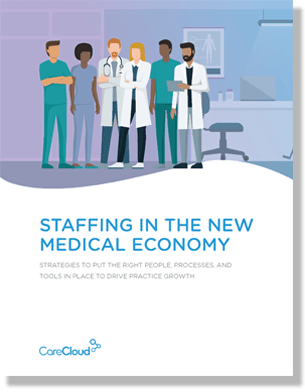WHAT IS A MEDICAL CHART?
A medical chart is a document that provides healthcare providers with a patient’s complete medical history and clinical data. It comprises their demographics, vital signs, diagnoses, surgeries they have undergone or are scheduled for, medications they are taking or prescribed to take, treatment plans agreed upon with doctors’ notes on progress made so far, allergies identified, laboratory results alongside radiological studies, and immunization records.
Various healthcare professionals contribute to medical charts, including doctors, nurses, radiological technicians, and laboratory workers. Completing a medical chart is crucial for ensuring the best possible care for patients.
WHAT INFORMATION IS INCLUDED IN THE MEDICAL CHART?
Key Medical Events in a person’s life can be found on medical charts. A well-maintained chart contains vital information about a patient to guide healthcare providers in making informed decisions.
MEDICAL CHARTS INCLUDE:
- Demographics – name, contact information, age, etc.
- Developmental History – growth charts, motor development, cognitive development, social/emotional development, language development, etc.
- Immunization Records – vaccinations and dates
- Medications
- Medical allergies
- Surgical History – operation dates, reports
- Obstetric History – the number of pregnancies, complications, pregnancy outcomes
- Family History – immediate family health status, the cause of death, common family diseases
- Social History – past and current occupations, community support, etc.
- Habits – alcohol consumption, exercise, diet, smoking, sexual History
At each medical encounter, the following information will be added to the patient’s chart:
- Chief complaint
- History of present illness
- Physical exam (vital signs, organ system overview, etc.)
- Assessment and plan (diagnosis and treatment)
- Orders (lab, radiological, etc.)
- Prescriptions
- Progress notes
- Test results (lab testing, imaging results, etc.)
WHO HAS ACCESS TO A MEDICAL CHART?
Handling individual patient medical charts is a highly delicate task. Only the patient and healthcare team members taking care of him can see or make any changes to the document.
Medical charts are the property of the patient. They can check them for accuracy and permit other people to see them. When patients discover chart mistakes, they can request provider changes to ensure that medical records remain accurate.
WHAT IS AN EHR?
An Electronic Health Record (EHR) is a computerized version of a patient’s medical chart. These are real-time records that offer immediate access to health information. EHRs allow quick and seamless sharing of information among all members of a patient’s care team.
Moreover, EHRs aid in other care-related acts, such as quickly reaching data for evidence-based decision-making. They also provide immediate medication details, assist with quality control efforts, and promote communication among healthcare providers.
HOW DO EHRS HELP?
Electronic Health Records (EHRs) are vital in today’s healthcare, giving many advantages that improve patient care and health systems. There are various ways in which EHRs are beneficial for better healthcare delivery:
Immediate Access to Complete Patient Information: EHRs bring together patient data from various sources, including medical history, what medicines they are currently taking, allergies they have, lab results, and imaging reports. Doctors can look at a patient’s entire medical record without delay, which helps them in making precise diagnoses.
Careful Cooperation: Through seamless sharing of patient details, EHRs enable smooth and reliable communication among healthcare providers. When a patient’s care involves multiple specialists, EHR ensures that each has full access to the latest information about them.
Better Efficiency and Output: EHRs make handling administrative duties like setting appointments, managing bills, and organizing prescriptions easier. Automatic processes lessen the time used for paperwork, letting healthcare workers concentrate on looking after patients more.
Safer Patient Care: EHRs have clinical decision support systems, which can alert doctors about potential problems like situations where a specific treatment is not suitable considering the patient’s past health.
Enhanced Patient Involvement: EHRs are mostly equipped with patient portals where patients can see their health files, check test outcomes, and talk with healthcare providers. This kind of openness encourages involvement, motivating them to participate actively in looking after their well-being.
Data Analytics and Population Health Management: EHRs let healthcare providers examine large data sets to find patterns, monitor results, and control population health. EHRs are helpful in many ways, such as:
- Reducing medical errors in charts due to poor penmanship
- Improving accuracy and clarity of coordination of care
- Making health information easily accessible, reducing test duplications and treatment delays
- Allowing patients to see their records and make needed changes to ensure accurate records
- Guaranteeing medical charts are never lost and easily accessible
Conclusion
A medical chart is one of the most essential documents in healthcare as it contains all the information about the patient, their illnesses, and therapies. It is a crucial tool that helps healthcare givers make decisions, monitor progress, and ensure patients receive the best treatment. Medical documents like charts contain relevant information like age, medical history, medication, and tests done on the patient, which enhances continuity of care and patient’s outcome. When well managed, they are essential tools in providing quality healthcare and instrumental in integrating care from one healthcare provider to another.




